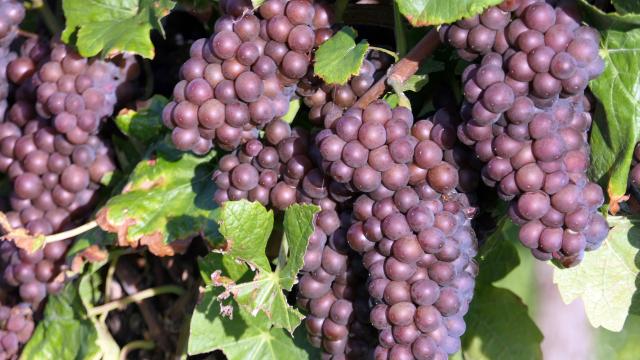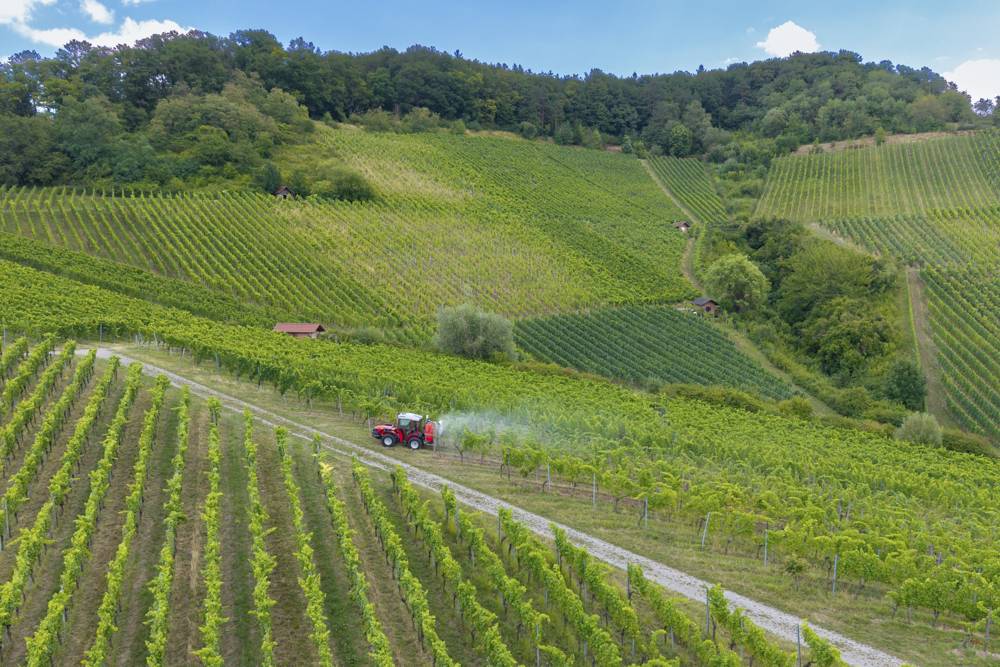

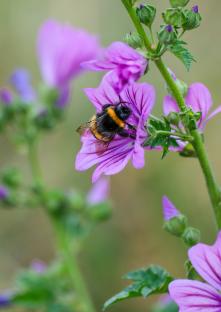
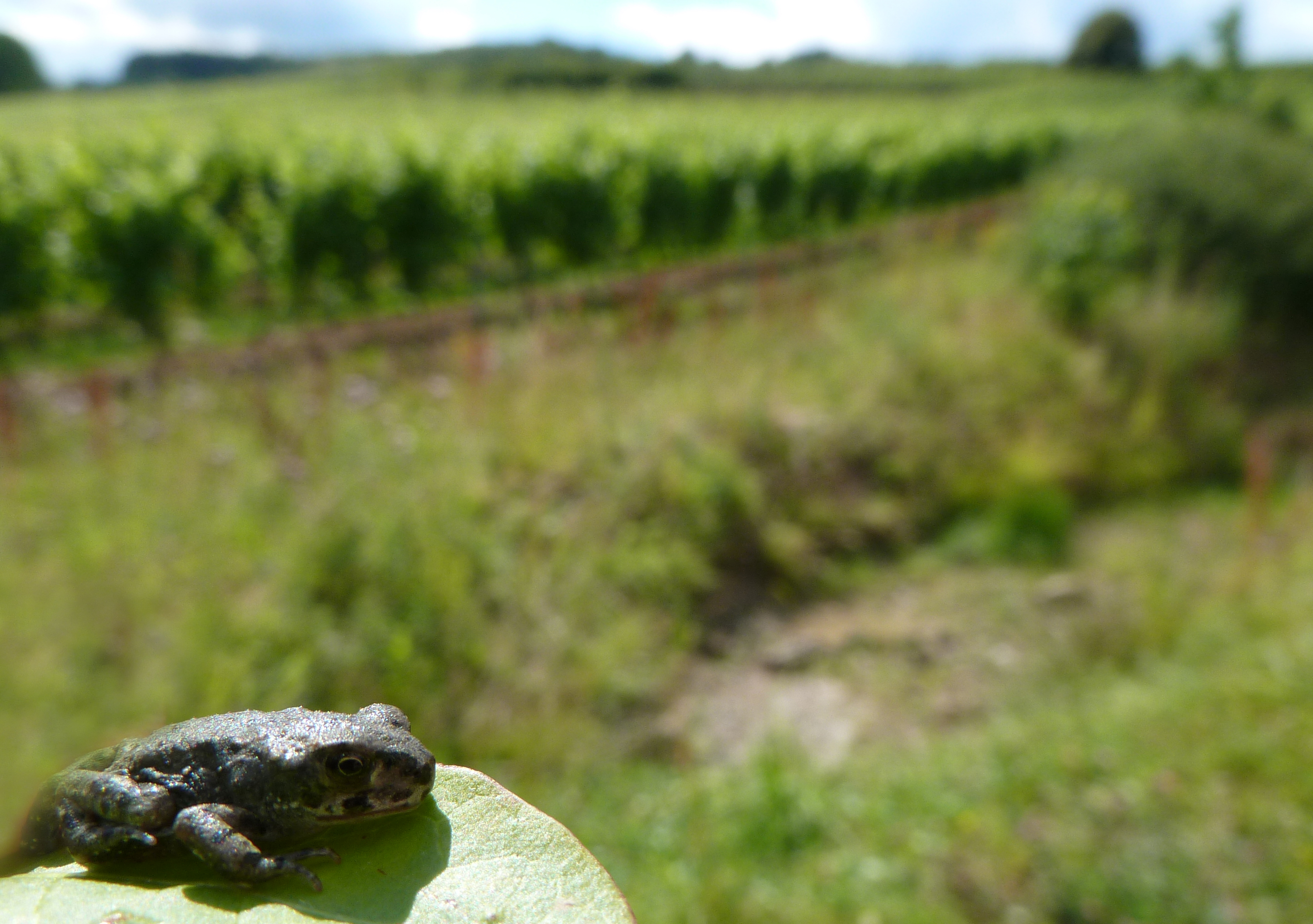
They kill pests, but also end up in forests, meadows, and soil. Why pesticides have become an underestimated environmental problem.
For over 20 years, Carsten Brühl has been driven by the question of what effects pesticides have on animals and plants living in agricultural landscapes. It is no easy task. In addition to the time-consuming data collection, there is also the political debate. There is often fierce opposition from agricultural associations, winegrowers, and farmers. However: "The discussion about the effects of pesticides on the environment has now reached society," says Brühl happily. When the environmental sciences program focusing on ecotoxicology launched at the Landau campus in 2001, the public had little understanding of what was being studied. "Today, I only need a few words to explain what an ecotoxicologist does," says Brühl, recognizing the change.
Just a few years ago, he was one of the few ecologists conducting pesticide experiments. In the meantime, it has become a hot topic, not only in science, but also in the public sphere. "The phenomenon of insect decline has reached the public, and politicians are finally taking an interest." One trigger was a 2017 study by the Krefeld Entomological Society that documented a significant decrease in insect biomass. Unfortunately, the topic has now disappeared from the political agenda. Questions about environmental and climate protection have also lost importance in public perception. According to Brühl, this is a fatal development.
"It's clear that the ecosystem in agricultural landscapes is damaged," says Brühl. The scientist is frustrated that the industry continues to distract from the issue by claiming that the decline of insects depends on many factors. The connections are obvious, he says: "One third of Germany's land area is farmland that has been treated with insecticides for over 50 years." "If there is clearly insect decline and insecticides are applied annually over such a large area for such a long period of time, I don't need complex explanations."
Pesticide Use: Fatal Consequences for the Environment
Brühl has long been concerned that the process for approving plant protection products is fundamentally flawed. In fall 2019, he and his colleague Johann Zaller from BOKU University in Vienna published an article in the journal “Frontiers in Environmental Science” showing that, although testing the environmental impact of pesticides for approval is complex, the process does not take practical conditions into account. Given the massive species extinction and the time it would take to change the approval procedure, the two scientists advised swift action: drastically reducing pesticide use, returning to the core principles of integrated pest management, increasing the proportion of hedges and field margins in the landscape, and further expanding organic farming. Brühl has not tired of repeating this mantra, even five years after the article was published.
"Over the past 30 years, almost 80 percent of insect biomass has demonstrably disappeared in the agricultural landscapes of Germany"
Carsten Brühl
This is because, as with any crisis – whether climate change or pandemic containment – it is all about the so-called "tipping points," the points at which a system flips and can no longer be controlled. "We are also approaching these tipping points in the ecosystems of the agricultural landscape, and massive action must be taken very quickly," says Brühl, emphasizing the urgency. Above all, large contiguous areas must be created where no pesticides are used. "There, biodiversity can recover."
A study published by Carsten Brühl and his team in late 2020 shows how dangerous agricultural spraying can be for humans and animals. The researchers investigated the effects of folpet on frogs. Folpet is the most commonly used fungicide in viticulture in Germany. Some of the fungicide applied to the vines ends up on the ground. When frogs and other amphibians hop through the vineyard, they absorb the harmful substance through their skin. Brühl and his team recreated this situation in the laboratory by placing the frogs on a surface that had been in contact with folpet for 48 hours.
The researchers assumed the fungicide would trigger behavioral changes in the amphibians. However, the result was more drastic: over 50 percent of the frogs died. For Brühl, this was an unexpected and alarming outcome. "Frogs belong to what is known as the sentinel group. If they react sensitively, then there is something in the environment that may also be dangerous to humans," the ecologist explains. Regardless of the Landau study results, other scientists in Germany had proposed classifying folpet as a likely carcinogen, which corresponds to the second-highest level. In this case, folpet would no longer be permitted for use. However, the experts' advice was not followed in the new procedure for evaluating the substance, and the studies were apparently not taken into account. Last year, the EU Commission extended folpet's approval until 2039. "This will result in the loss of further amphibian populations," says Brühl.
Farmland: Permanent Storage Site for Pesticides
Brühl has been studying the effects of pesticides on insects and amphibians for many years. Currently, his research focuses on determining which pesticides are present in farmland and how much of each pesticide is present. "There is still no data in Germany on the presence of pesticides even in agricultural soil, even though soil fertility and sustainability are being discussed," says Brühl, expressing his surprise at the lack of monitoring. His working group has taken the initiative and investigated pesticide pollution in several research projects throughout Germany. The results were recently published in scientific journals.
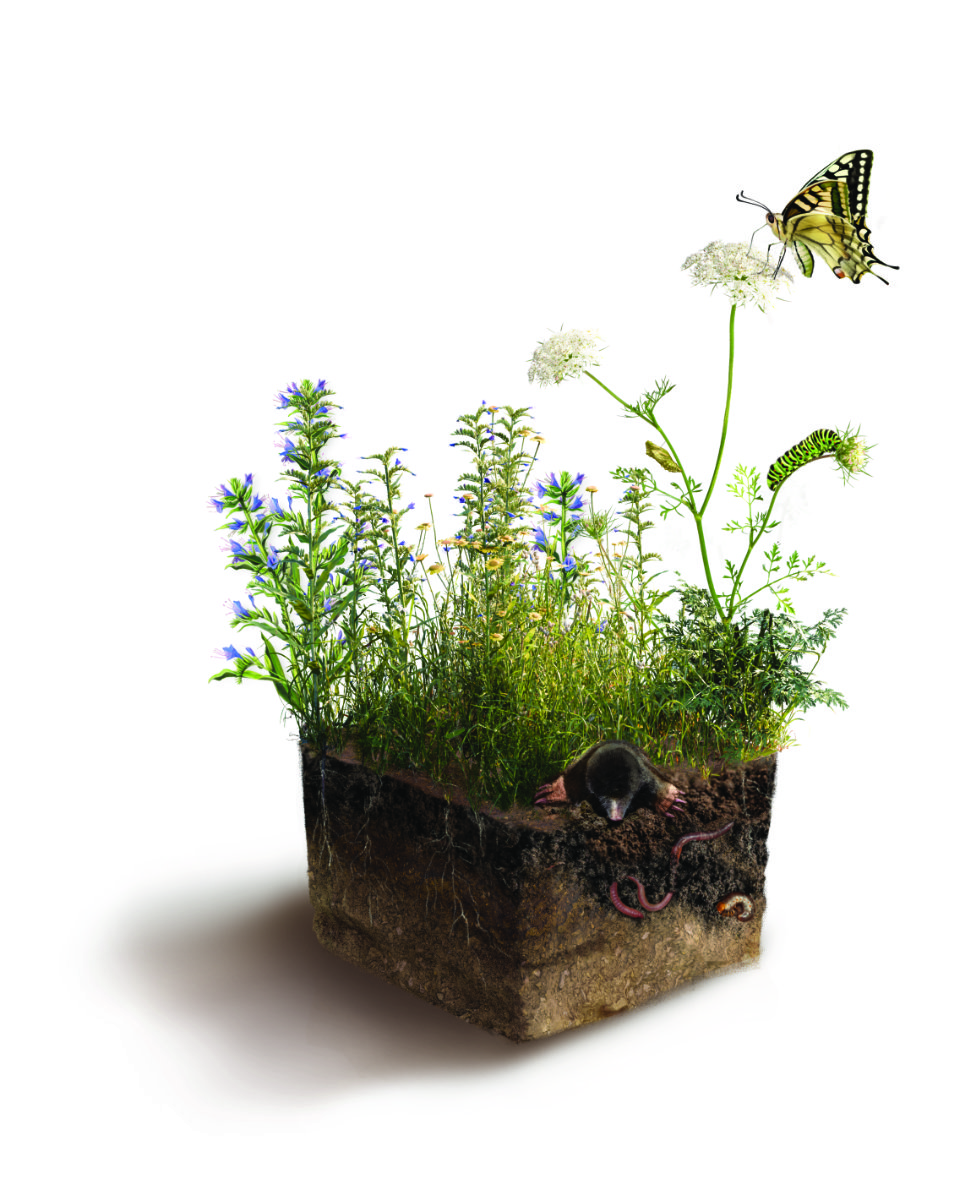
Pollution was measured throughout the year for the first time
In a project in Rhineland-Palatinate, Brühl and his team took monthly measurements from February 2021 to February 2022. "We wanted to see if there were any spikes and when the concentrations might level off so that we could classify them chronologically," Brühl explains. The researchers examined various crops, including viticulture, vegetable cultivation, cereals, and sugar beets. Specifically, they took samples within a radius of one, five, and 20 meters from the field. "We wanted to know if and how the pesticides drift into the surrounding grassland and how long they remain there."
Using modern analytical techniques that can detect low concentrations, the environmental scientists tested the samples for 93 common pesticides. "The concentrations were generally low, but we found 20 to 25 pesticides in over 350 different mixtures in the field soil." These concentrations add up in this cocktail and pose a risk to soil organisms. At the same time, the results are also interesting for farmers, according to Brühl. This is because a herbicide that lingers in the soil could complicate cultivation the following season.
Gone with the Wind: Pesticides Detected Far Away from Fields
Pesticides do not stay where they are applied. In studies of two traditional and intensively farmed agricultural landscapes – the Upper Rhine Valley and South Tyrol's Venosta Valley – Brühl's research team proved that these chemical substances spread in mixtures from lowlands to high altitudes. This occurs through evaporation and subsequent precipitation, as well as wind drift. The researchers systematically investigated the two study areas along defined measurement paths. Brühl emphasizes that this has never been done on such a large scale before.
The researchers detected nearly 30 pesticides in Venosta Valley and over 60 in the Upper Rhine region. Almost all of the measurement sites were contaminated. Although pesticide levels decreased at higher altitudes and farther from cultivated areas, the researchers detected the substances in protected areas and villages as well. "They have no place there," warns the ecotoxicologist. "These results are alarming and highlight the potential environmental impact of conventional agriculture," emphasizes Brühl.
A massive reduction in pesticide use is necessary
For Carsten Brühl, there is no time to waste. Pesticide use must be significantly reduced. "Over the past 30 years, almost 80 percent of insect biomass has demonstrably disappeared in the agricultural landscapes of Germany," emphasizes the ecotoxicologist. "If we don't want to end up gawking at a rare bumblebee as if it were an alien, politicians must finally take action now." Brühl believes the agricultural lobby is responsible for too little being done for too long and for slowing down new initiatives. He cites the Insect Protection Act of 2021 as an example. It stipulates that the use of pesticides must be significantly reduced in protected areas and along waterways.
"If we don't want to end up gawking at a rare bumblebee as if it were an alien, politicians must finally take action now."
Carsten Brühl
"There was a huge outcry from the agricultural sector. Farmers mobilized and drove their tractors to Berlin," recalls Brühl. To illustrate the law's impact, the researcher and his colleagues conducted some calculations. The act affects only 0.35 percent of Germany's arable land, which is where pesticides may no longer be used. "This affects perhaps 2,000 of the 280,000 farms nationwide, which is less than one percent," says Brühl. He finds it inappropriate that lobbyists and associations staged an uproar, acting as if farmers could not cope with the "burden" of an alleged general pesticide ban.
"The positive effects of the amendments to the Federal Nature Conservation Act and the Plant Protection Application Ordinance on insects will be limited," the scientist estimates. Even if only 0.35 percent of land used for agriculture changes, it will have little effect on the area and will not halt the decline of insects there. However, special and rare insect populations in the affected protected areas are now somewhat better protected.
Honest communication with farmers is crucial
Brühl criticizes the industry for telling farmers that the substances they apply break down rapidly and that the soil is clean again at the start of the new planting season. However, his measurements show that many substances are present in the soil throughout the year. "A farmer whose field we tested for pesticides was shocked to find a mixture of almost 30 different chemicals." Questions remain about how long individual substances remain in the soil and the environmental effects of this mixture. In the laboratory, mixtures of nine pesticides in similarly low concentrations reduce egg laying by fruit flies. Research under field conditions and on other insect groups is lacking. Currently, we only know the direct effects of a substance on individual animal groups. The next step in Brühl's research will be to investigate how mixtures of several substances behave.
Brühl frequently consults with grassroots organizations, winegrowers, and farmers. For him, this is part of a realistic assessment of his work. "Of course, I also meet with farmers who are more conventionally minded and have been told for years that there is no alternative to chemical pesticides in agriculture," says Brühl. He admits that synthetic pesticides cannot be entirely avoided in our society, but insists that feeding the world does not depend on their use. "It's more of a global distribution problem," says the researcher. In his conversations with farmers and winegrowers, he often encounters an openness to and interest in a transformation. "Farmers are assured a market for organically grown products because people want to consume fewer pesticides," says Brühl. His ideal world would be one where he has to find a new field of research because there are no more pesticides. “I would love that."

Would you like to explore the topic in more depth?
You can find further information in the selection of scientific papers on the subject and various media reports:
Ken M. Mauser, Jakob Wolfram, Jürg Spaak, Carolina Honert & Carsten A. Brühl 2025 Current-use pesticides in vegetation, topsoil and water reveal contaminated landscapes of the Upper Rhine Valley, Germany. Communications Earth & Environment. DOI: 10.1038/s43247-025-02118-2
>> READ PAPER
Carolina Honert, Ken Mauser, Ursel Jäger, Carsten A. Brühl. 2025. Exposure of insects to current use pesticide residues in soil and vegetation along spatial and temporal distribution in agricultural sites. Scientific Reports. DOI: 10.1038/s41598-024-84811-4
>> READ ARTICLE
Carsten A. Brühl, Nina Engelhard, Nikita Bakanov, Jakob Wolfram, Koen Hertoge, Johann G. Zaller. 2024. Widespread contamination of soils and vegetation with Current Use Pesticide residues along altitudinal gradients in a European Alpine valley. Nature Communications Earth & Environment. DOI: 10.1038/s43247-024-01220-1
>> GO TO PAPER
PAN-News: A cocktail of pesticides eradicates biodiversity - Interview with Prof. Dr. Carsten Brühl
>> READ INVERVIEW
Deutsche Welle (DW) Documentary: The great death of insects.
>>SEE DOCUMENTARY

Diese Themen könnten dich auch interessieren:


